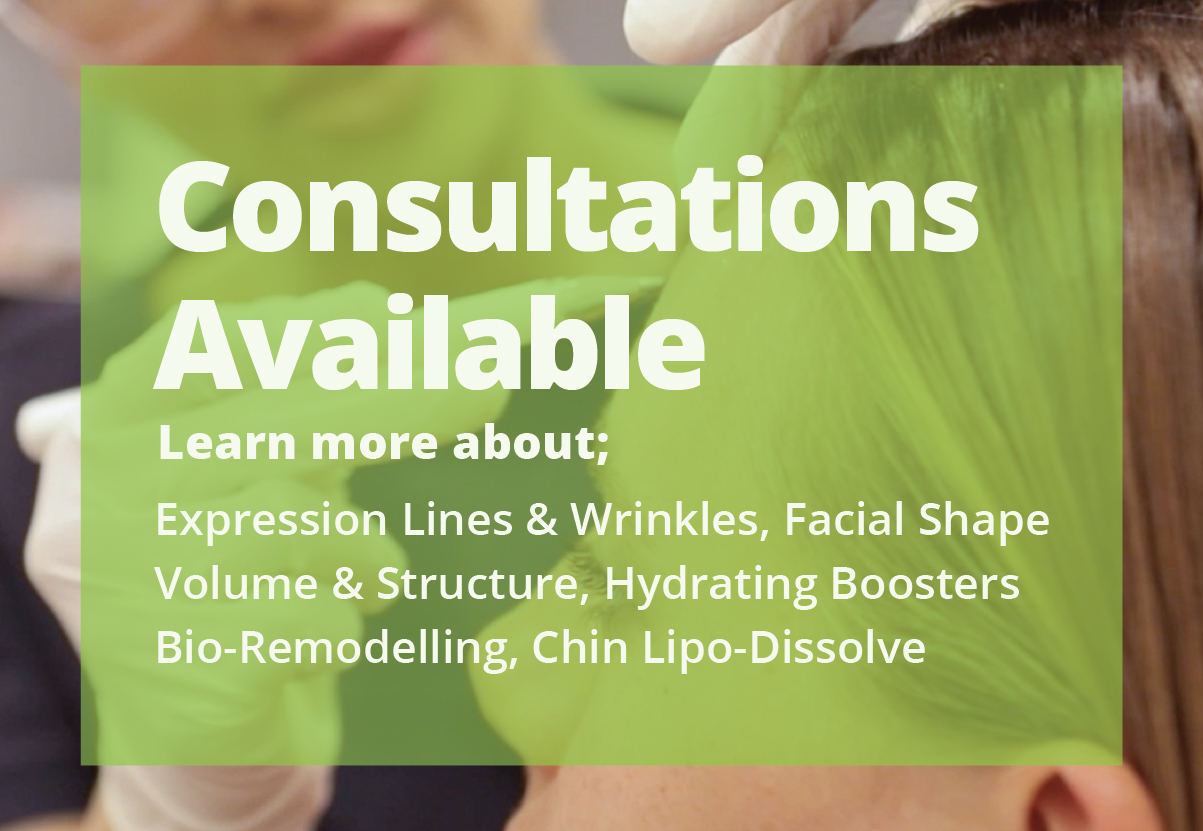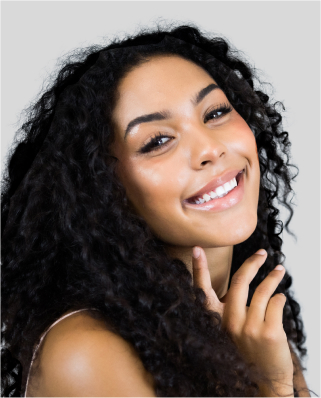What Are The Side Effects of Skin Needling?
Get in touch with us
With a change in season, your skin is ready for a textural turnover. Dullness and uneven texture can leave you feeling and looking fab to drab. Skin Needling gives you back your glow by resurfacing and reviving your skin’s natural rejuvenation process. However the thought of the side effects of Skin Needling may seem overwhelming so we answer your questions: let’s begin by understanding the process.
What is Skin Needling?
Skin Needling stimulates the rejuvenation of the skin through the use of innovative MediPro technology. An automated head of microneedles safely puncture the outer layer of the skin, triggering the body’s natural collagen production, effectively targeting priorities such as dullness, uneven skin tone and acne scars. With frequent exposure to the sun, environmental pollutants or even the body’s natural ageing process, natural elastin, hyaluronic acid, collagen production levels diminish which results in lacklustre, sagging skin.
Is Skin Needling Suitable for My Skin?
Skin Needling is suited to most skin tones and types. Dependant on your priorities this must have treatment targets
- Large open pores
- Dryness and dehydration
- Acne scarring
- Pigmentation and uneven skin tone
- Reduces the appearance of fine lines
- Promotes collagen production
- Offers overall rejuvenation
- Lacklustre skin
- Texture
What Are The Side Effects of Skin Needling? Does Skin Needling Tear My Skin?
No, however Dermarollers do. The mechanical rolling movement of microneedles at an angle creates ‘tearing’ wounds. Using the innovative MediPro pen technology which comprises of an automated head of microneedles, tiny micro wounds are made into the skin which then stimulates the body’s natural production of collagen. Compared to Dermarollers, Skin Needling is performed by qualified clinical therapists who provide aftercare support.
Derma Rollers
Pros – Can be done at home – Convenient – Affordable
Cons – Quality of the components in the device used is not guaranteed – No after care provided
5 things you should never do after a skin treatment
Get in touch with us
Leave poor skincare in the past with these 5 things you should avoid after your skin treatments.
Most facials consist of a cleanse, exfoliate and treat process with the aim of rejuvenating and nourishing the face, lifting away dirt, oil and residual makeup. However, your post treatment routine is just as important. Here are 5 things you should avoid after a facial.
5 things you should never do
- Don’t pick your face
As tempting as it seems, picking at blemishes and breakouts unfortunately does more harm than good. Picking will expose unhealed skin, leaving it red and irritated, prone to discolouration, pigmentation and potential infection.
- Do not over exfoliate
Over-exfoliation can damage the epidermis (outermost layer), consequently leading to irritation. After a facial, additional exfoliation in the next few days is unnecessary as you are prone to redness and sensitivity. In Chemical Peels, the buildup of dirt, makeup and natural oils is dissolved as it gently penetrates into the surface to target cells that cause priorities such as acne breakouts, traumatic pigmentation and collagen loss. LED Light Therapy compliments Chemical Peels by emitting wavelengths of LED light energy to stimulate cellular repair and renewal, successfully accelerating the healing process.
- Waxing
Waxing hurts, for a reason! This hair removal process essentially works by ripping your hairs by their roots, leaving tiny wounds beneath the surface. Combined with your decongested pores that have been blessed with the benefits of the exfoliation process, having tiny wounds created from waxing can exacerbate the healing process, leaving you prone to breakouts and infections. Patience is key in the pursuit of radiant complexion.
- Avoid excessive exposure to the sun
As excited as you are to bask in the glow of the sun, it’s important to protect yourself from potential sun damage especially with your skin being at its most sensitive post treatment. With Australia’s high UV levels, daily sun protection is a MUST to prevent signs of premature ageing, which often show up as dryness, fine lines and pigmentation. Post treatment, we recommend Results Active Protect SPF 50+ to protect the skin from the sun. A light and oil free formula that can be combined with your favourite foundation.
- Wearing heavy makeup – let’s break up
In the immediate 24 hours post facial, it’s best to leave your skin to breathe as most cosmetic products contain a large amount of chemicals which can often aggravate or cause irritation. Waiting till your skin’s redness and sensitivity has subsided before returning to applying makeup ensures that you will reap the benefits of the facials.
What Causes Acne On The Face?
Get in touch with us
No one is immune to pimples and although picking blemishes gives you short term satisfaction, you are left with a not so friendly reminder on your face. Whether you’ve had it in the past or have recently experienced breakouts on your face, learn the causes of acne to prevent future ones from appearing.
What causes acne on the face and when does it occur?
Acne commonly occurs during puberty. However it can happen anytime dependent on a range of factors such as:
- Hormonal changes
- Genetics
- Use of harsh skincare ingredients
- Build up of dead skin cells and oils from not properly washing the face
- Excessive production of sebum (oil)
How is acne formed?
Your skin has pores that connect to oil glands under the skin. These glands are responsible for the production of a regulated amount of sebum which carries dead skin cells through the follicles to the surface of the skin. Pustules, or more commonly referred to as a pimple is formed when these follicles get blocked as oil builds up under the skin as it’s infected with bacteria.
Where do face breakouts occur?
The most common place for adults to experience acne on the face is along the jawline and cheek. Whereas with teens, the hot spots for breakouts are on the T-zone: forehead, nose and chin.
What options are there to treat and prevent future breakouts on the face?
1. Regularly cleansing, exfoliating and moisturising the face: Treat don’t strip
Double cleansing, moisturising the face daily and exfoliating 2-3 times a week with pH balanced products will clear away the daily buildup of dead skin cells and oil from your face. Sticking with gentle skincare products will ensure that your skin’s pH balance is not thrown out of whack which can leave your face prone to irritation and infection.
Often oily skin is an indicator of dry or dehydrated skin as the sebum production is sent into overdrive in an attempt to balance the skin’s natural oil and moisture levels. By moisturising and wearing sunscreen daily, the skin’s barrier is protected, minimising the amount of water loss.
Results Active Protect SPF50+ is a lightweight and oil-free sunscreen that comes in a handy tube ready for on the go application. It can be worn by itself or under makeup and best of all, it’s been formulated specifically to be used in conjunction with any of our skin treatments.Refine and rejuvenate your skin with microdermabation
2. Undergoing regular skin treatments: Acne Beta Peel + LED Light Therapy
Skin treatments such as chemical peels work by deeply penetrating beneath the epidermis to treat congested pores, build of dead skin cells, pigmentation, large open pores, blemishes and breakouts. Unlike physical exfoliation processes, chemical peels do not aggravate or create tiny wounds in the top layer of the skin. The Acne Beta Peel combines the unique properties of salicylic and dioic acid to effectively destroy acne causing bacteria and prevent future breakouts. We highly recommend the LED Light Therapy treatment after a chemical peel as it aids killing acne causing bacteria, soothes redness, stimulates collagen, accelerates healing time and enhances your treatment results.
What causes acne scars?
Whilst not dangerous, breakouts can leave scars and hyperpigmentation. Whilst hyperpigmentation can fade over time, scarring appear as permanent textural indentations on the skin. Skin Needling is an effective solution in reducing the appearance of scarring. Using the DermaPen, tiny needles on a motorised head create micro wounds. This triggers your body’s natural response to generate new skin cells, stimulate collagen and elastin. For optimum results, we recommend 4 to 6 treatments combined with the healing properties of LED Light Therapy to reduce the appearance of scarring, improve skin texture, reduces pore size and a rejuvenated complexion. Results Laser Clinics is one of Australia’s most trusted provider of Laser Hair Removal, Skin treatments & Cosmetic Injectables. Results Laser Clinic is available nationally & are committed to delivering results that make you look & feel your best.
For more information, call our experts or chat online, to ask any questions, or to arrange a free no commitment consultation.
What Is The Difference Between Dry and Dehydrated Skin?
Get in touch with us
The weather might be dull and dry but your skin doesn’t have to be. By understanding the difference between dry and dehydrated skin, reviving your skin’s lost glow and firmness is just a treatment away!
Commonly mistaken as the same, dry and dehydrated skin share the same signs and symptoms of skin that is:
- Itchy
- Flaky
- Dull
- Tight
- Rough
- Feels Dry
Dry skin occurs when there is a lack of natural oils in the skin sebum whereas dehydrated skin is a result of an inadequate amount of water.
Causes of pimples on face in adults: Top tips on how to prevent face breakouts
Get in touch with us
If we had to choose a single thing we didn’t miss about being a teenager, the answer would’ve been unanimous: pimples. Taxes over breakouts, anyday. But just like understanding your finances, by delving into the causes of pimples on the face in adulthood, you can finally regain control of your skin. It’s time to show them who’s boss! Here are the 4 main causes of pimples on the face in adults and essential tips on how to avoid them:
- Buildup of skin cells, dirt and oil
Pimples, breakouts, whiteheads and blackheads are formed when a buildup of dead skin cells, dirt, oil and acne causing bacteria clog your pores. Leading inflammation, irritation and unsightly red blemishes. TOP TIP #1: Wash your face twice daily and exfoliating on a regular basis By regularly washing your face in the morning and night, your skin is free from the dead skin cells, dirt and environmental pollutants that have inhabited on your face during the day. An additional step in your journey to a clearer complexion is exfoliating. Chemical Peels are an effective way to target priorities such as
- Treating active acne
- Eliminating acne causing bacteria to prevent future breakouts
- Evens out your complexion
- Reduce the appearance of redness and inflammation
- Improves texture
- Tightens pores
Combined with the healing properties of LED Light Therapy, you are on your way to a blemish-free and radiant complexion. This treatment effectively destroys acne causing bacteria, soothes and calms inflammation as well as encourages cellular repair.
Your friend who’s regularly changing their pillowcase may have been on to something. Studies have shown that changing your pillowcase every few days can reduce the chances of your skin from breaking out. Why? Over time, your pillowcase becomes a haven for dead skin cells, dirt and oil from your clothes, face and hair.
What Is The White Stuff That Comes Out of A Blackhead?
Get in touch with us
You’ve seen blackheads before. Commonly found on your nose BUT what is that white stuff that comes out of a blackhead? Not to fear, we help you with your breakout free journey by presenting you the 3 commandments of blackhead banish 101.
1. PICK: your skin battles
As tempting as it may be, popping any blemishes on the face never does your skin any good. Squeezing blackheads can cause any inflammation to be pushed deeper back beneath your skin as well as reintroduce bacteria into the open wound. Blackheads are formed when an open comedone is filled with skin debris and oil. When exposed to air, it oxidises and turns dark brown. Contrary to popular belief, it’s not dirt that’s trapped in your pores but old skin cells and oil. Whiteheads occur when these contents aren’t exposed to the air.
The ‘white stuff’ that comes out of a blackhead or more commonly in pimples is pus. Pus is formed from inflamed debris, dead white blood cells and is also produced as the body’s response to bacteria invading the system. This can it will heal on its own without treatment. However, skin treatments such as the Acne Beta peel can assist in reducing the risk of future breakouts.
Additionally, using harsh cleansers and rough exfoliants can cause further irritation, triggering your skin’s sebum levels to go into overdrive to compensate for the current lack of oil and hydration in your skin. An excess of oil can clog up pores which then interrupt the regular flow of oil from beneath to the surface of the skin and voila, a blackhead is formed.
Instead of irritating your blackheads and breakouts, the Acne peel will allow the dream team combo of salicylic and dioic acid to work their acne busting magic on your skin, leaving you with clear skin.
























